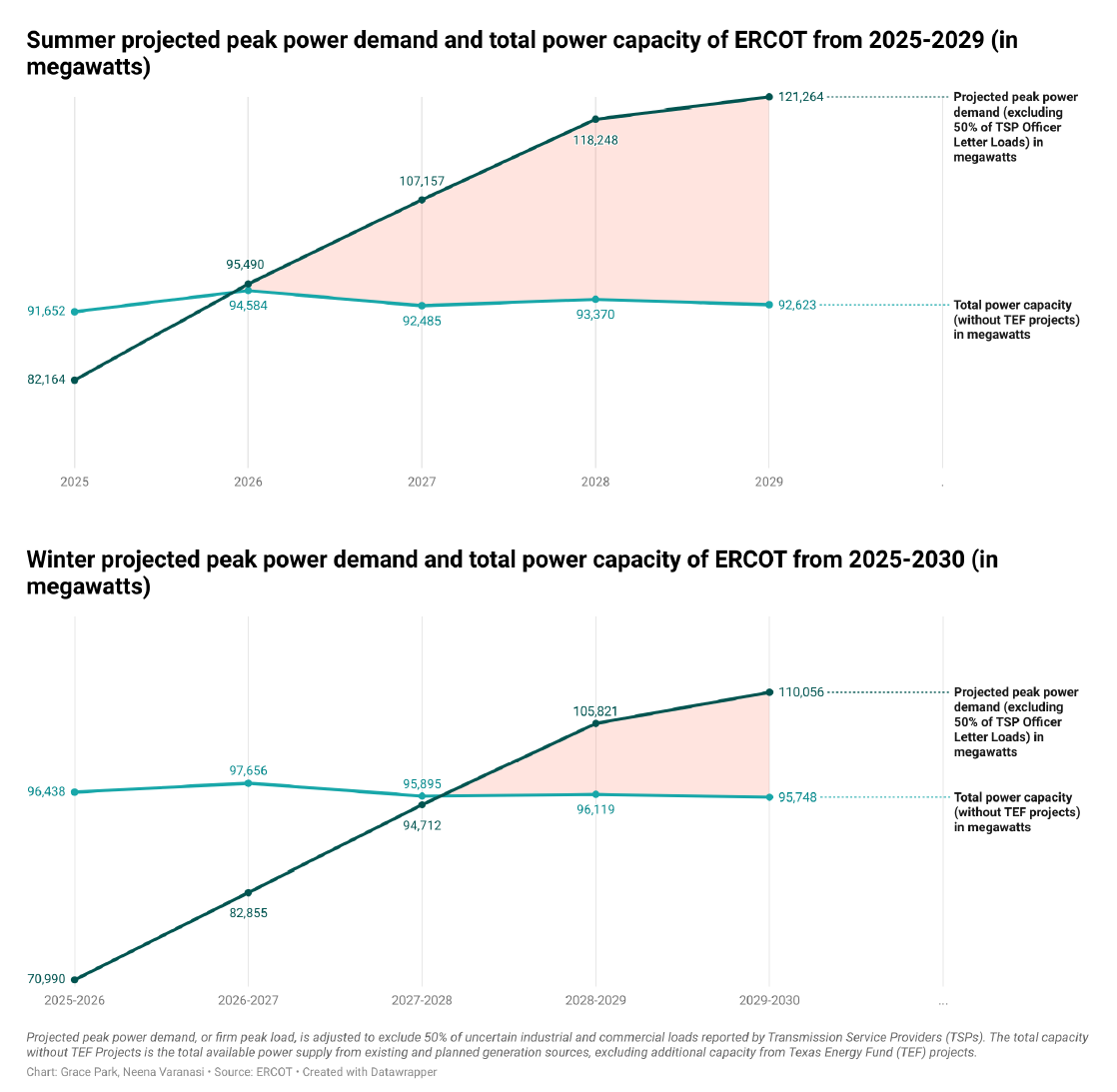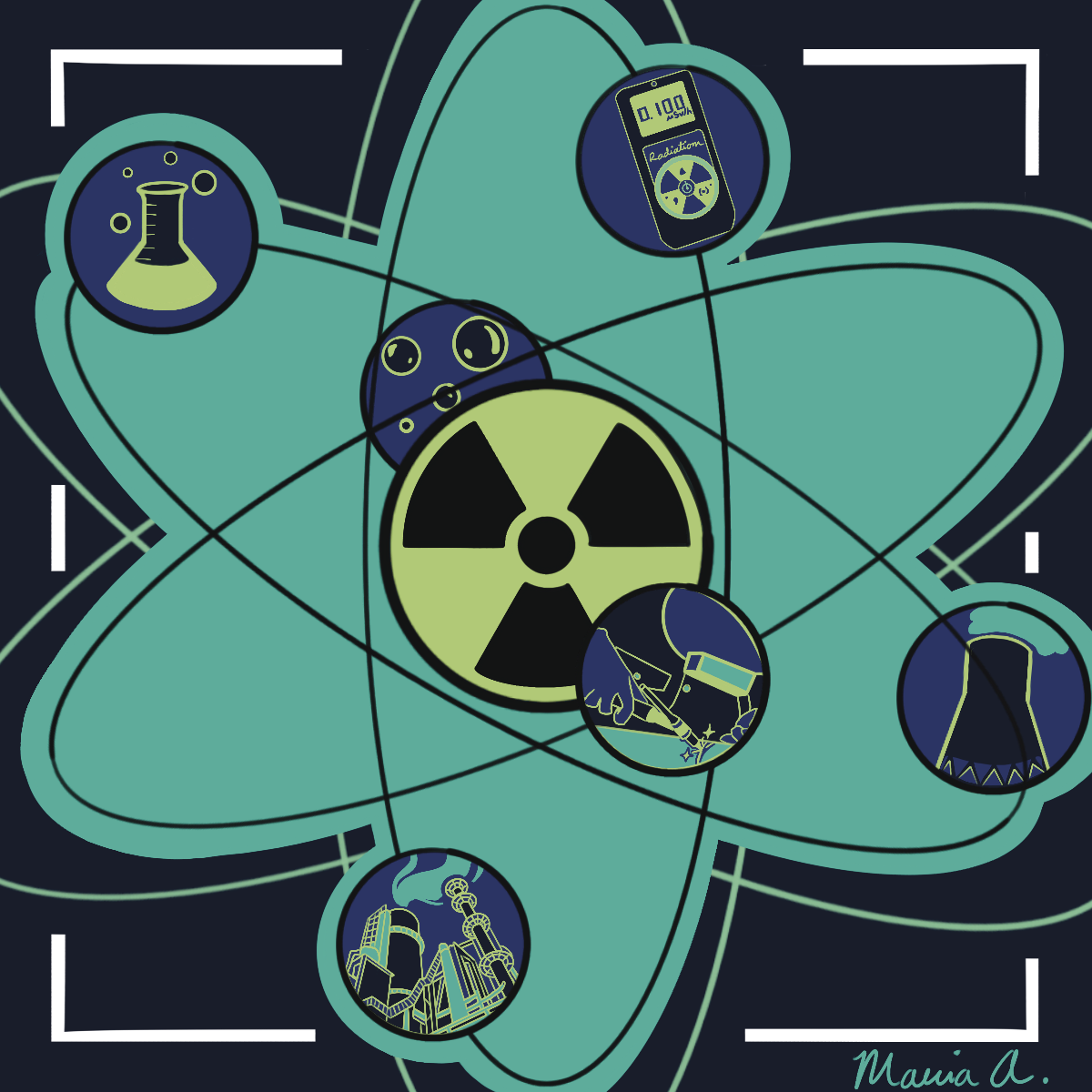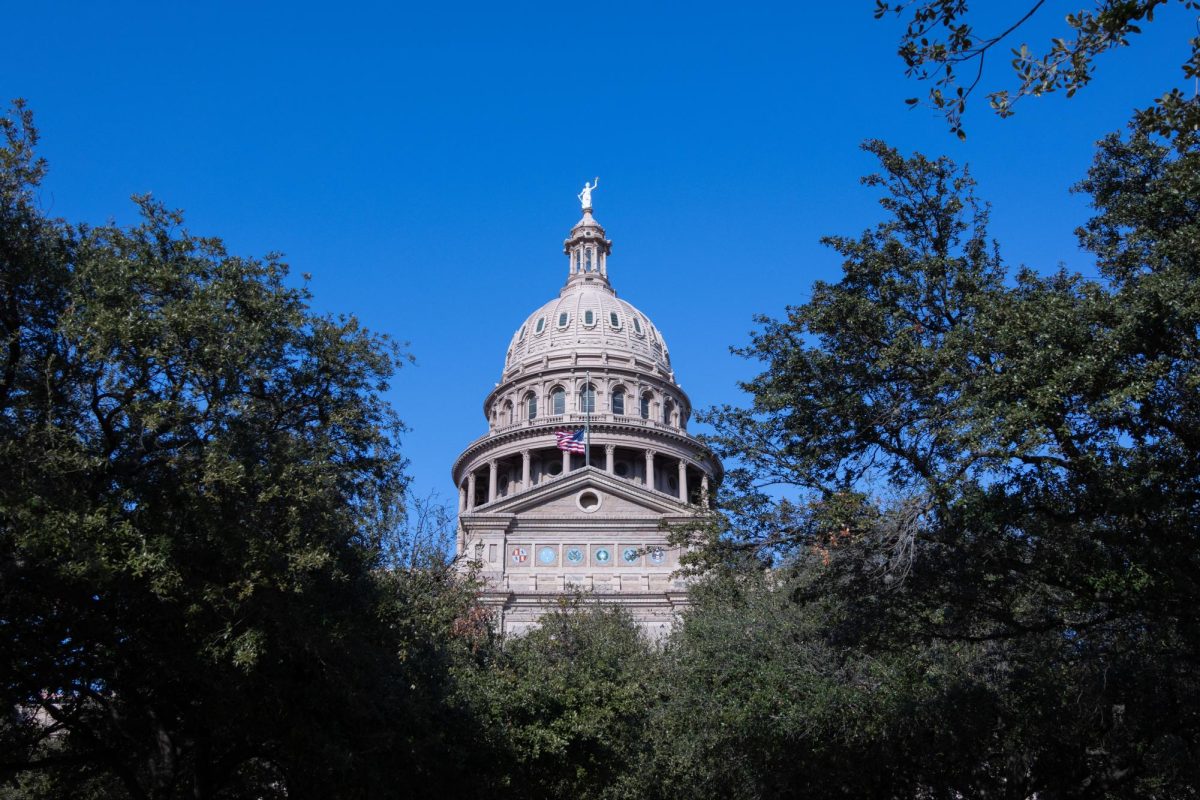Four years after Texas’ widespread blackouts in February 2021, the Electric Reliability Council of Texas released a standard report on Feb. 13 that predicted irregular electricity reserve shortfalls in the next several years.
The report, which details energy reserves, or energy capacity, from 2025-2029, foresees a scenario in which energy demand exceeds availability as early as next summer by 906 megawatts, which ERCOT said can power over 181,000 homes during periods of peak demand. However, both ERCOT and University researchers do not believe this will happen and explained that the report’s extremity is due to the inclusion of unsigned loads, or electricity demand not yet committed but expected to exist in the future.
Joshua Rhodes, a research scientist at the Cockrell School of Engineering, said that under House Bill 5066, ERCOT is required to consider unsigned loads in all studies and simulated scenarios. This includes adding all rights to energy capacity companies have, even if they are not using all the energy, he said.
According to the news release, ERCOT is operating with the reported scenario to analyze “resource adequacy and transmission planning,” but recognize that extreme shortfalls are unlikely to happen and are using the numbers to proceed with caution.
“The (Capacity, Demand and Reserves) report … is not intended to represent expected real-time operations scenarios,” the news release said.
Despite ERCOT’s assurance, some researchers were still concerned about this prediction, especially concerning the state’s population growth. According to the 2024 United States census, Texas’s population grew by 563,000 people and the state added 133,000 housing units, leading to an increase in resource needs.
“You have more population (and) new homes that are being built, so that would draw energy,” said Javad Mohammadi, an assistant professor at the Maseeh Department of Civil, Architectural and Environmental Engineering. “You also have a lot of data centers that will be popping up soon.”
Mohammadi said that many of the companies growing in Texas need energy for computing and cooling, like artificial intelligence infrastructure. In Austin and San Antonio, under-construction activity for data centers and AI quadrupled between 2023 and 2024.
Mohammadi said more electric facilities also need to be built to ensure the grid’s stability.
“What this report tells me is that we need more investments (in the grid) … to make sure that we have enough reserve for the hot days and cool days,” Mohammadi said.
Rhodes, despite his belief that this deficit will not occur, said he appreciated the report and ERCOT’s research into energy levels.
“The silver lining for the report is (that) people are talking about it,” Rhodes said. “I’m hoping it triggers changes.”















